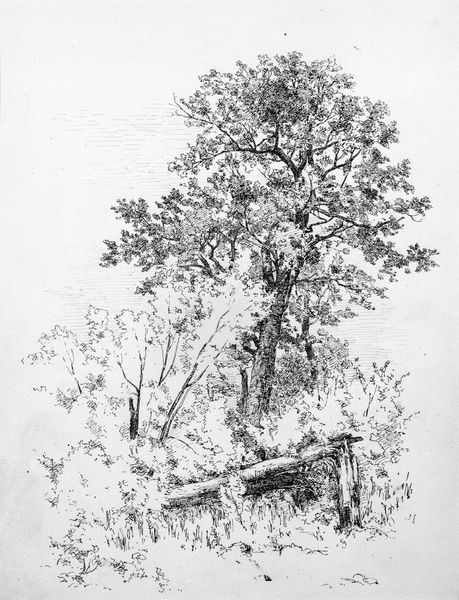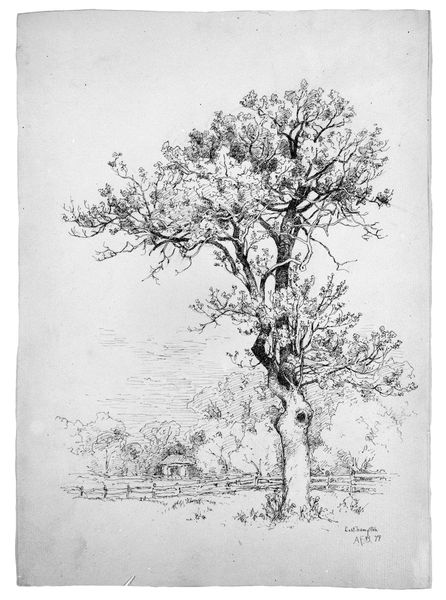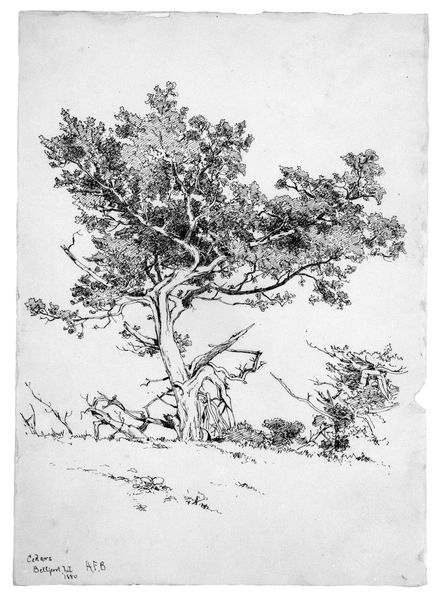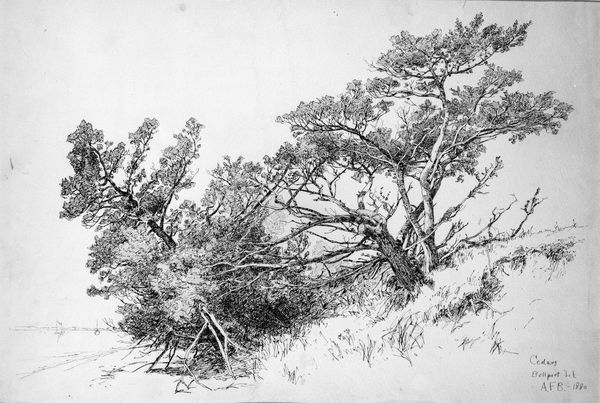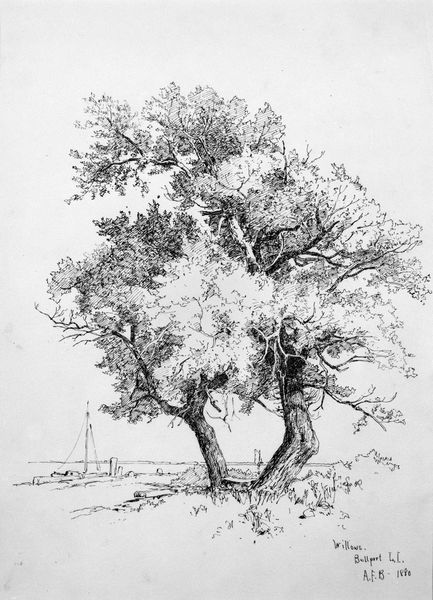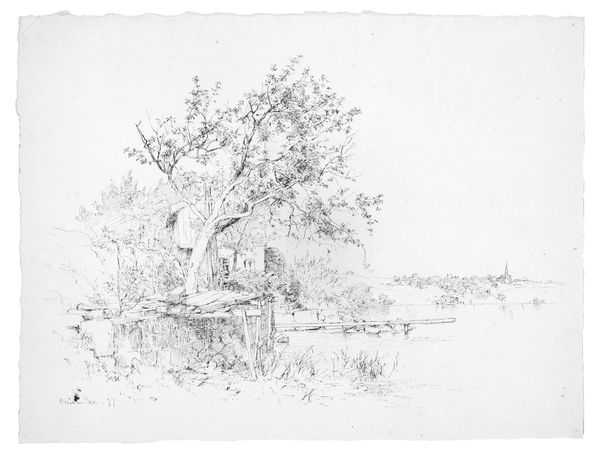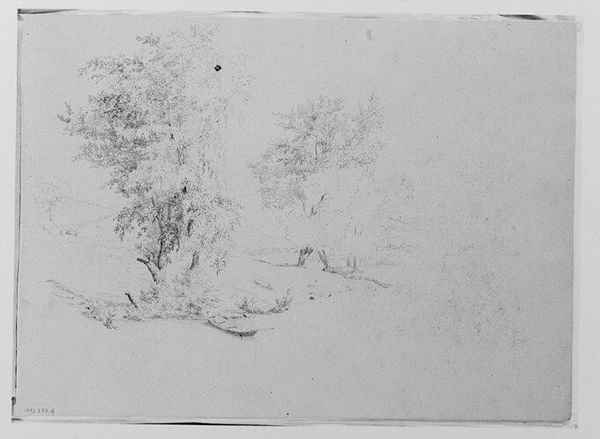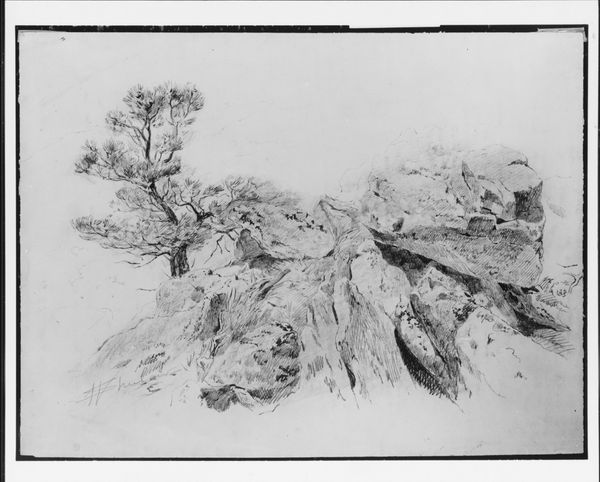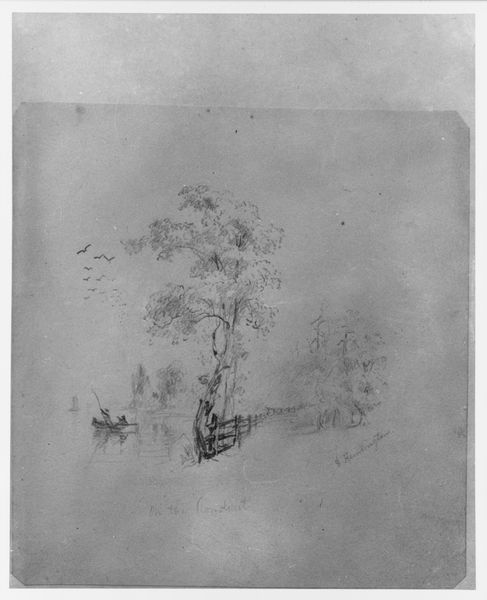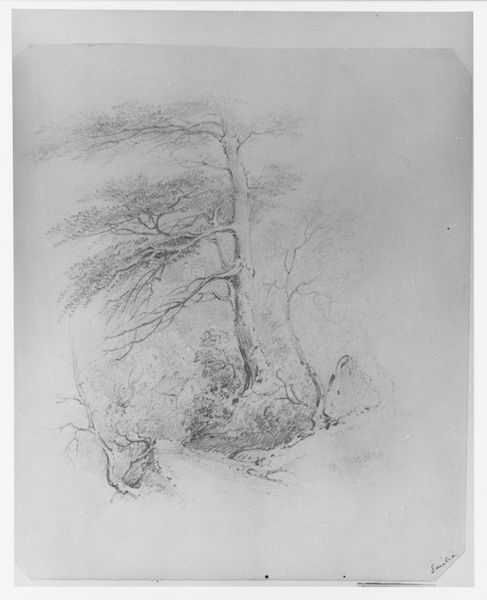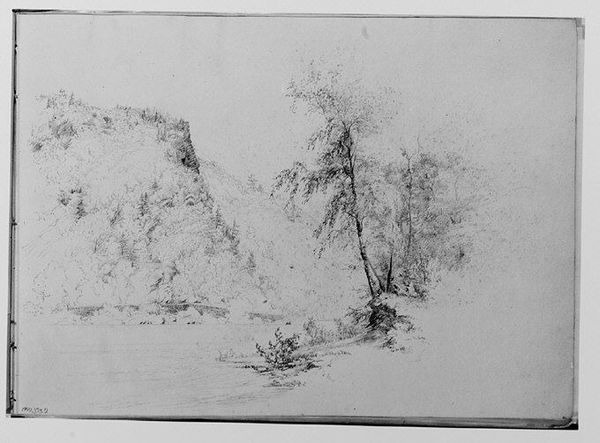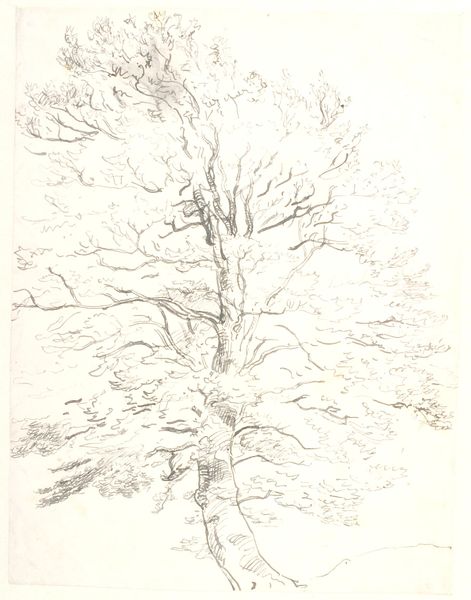
Dimensions: 15 3/16 x 11 1/16 in. (38.6 x 28.1 cm)
Copyright: Public Domain
Editor: Here we have Andrew Fisher Bunner's "East Hampton, Long Island," made in 1879. It's a detailed ink drawing, and I’m really drawn to the contrast between the dense foliage and the almost barren tree trunk. What strikes you when you look at this? Curator: What grabs me is Bunner’s deliberate mark-making. Think about the labor involved. Each tiny stroke builds this image, a manufactured representation of nature, using mass produced ink and paper. The plein-air aspect is interesting, too. Was it truly done on site? If so, what would have been the social implications of someone of Bunner’s standing engaging with that landscape directly? Editor: That’s a really interesting point – the social implications of landscape. Curator: Absolutely! This wasn’t a pristine wilderness untouched by industry. East Hampton was changing, and this drawing is a carefully crafted object. Was Bunner idealizing rural labor, romanticizing a disappearing way of life? Look at how he meticulously renders each leaf, almost fetishistically. What does this attention to detail signify in the context of increasing industrialization? Editor: So you’re suggesting that the labor he puts into depicting the scene parallels or even comments on other forms of labor happening in the area at the time? Curator: Precisely. It raises questions about value. Is the meticulousness of his artistic labor a form of resistance against the devaluing of manual labor during this era? The materials—ink, paper—were readily available, commercially produced. The real value then lies in the application, the sheer effort invested. Editor: I never would have thought about it that way. I was too focused on the image itself! Now, I'm wondering about his choice of materials, like, why ink specifically? Curator: Consider the portability of ink and the increasing availability of paper, mass produced for wide consumption.. Ink allowed for reproducibility; and drawings like this could have circulated amongst a wider, middle-class audience interested in images of leisure. Editor: This has totally changed how I see the piece, thinking about materials, production, and consumption and it´s very exciting. Thanks! Curator: Indeed. Thinking about those systems helps unlock much deeper layers of meaning!
Comments
No comments
Be the first to comment and join the conversation on the ultimate creative platform.
